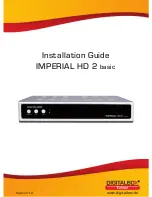
Frequency:
916 MHz, FSK modulation
Indicator Lights—Tx:
Green LED: Tx Data, Flashes upon activation and release of the
external safety device to indicate transmission. Flashes every 2 seconds to indicate monitoring.
Mounting:
4 corner screws (provided)
Power Source:
Batteries: 2 AA, 1.5v lithium* or alkaline
*Recommended for extended life in prolonged cold environments. Life expectancy: 2 years
Dimensions:
1.80”W x 4.78”H x 1.75”D
Test Button:
Momentary push button—forces the transmission of the transmitter's address
and sensor status. Reports the edge is activated.
5-
Specifications and Controls: Transmitter Unit
6-
Specifications and Controls: Receiver Unit
Power:
12-24 VAC/DC nominal (8-30 V max); power may be supplied from the operator or
alternatively from an external supply
Cable Connections:
Screw clamp type terminal blocks for 18-26 AWG wire
Learn Buttons:
Used to associate a transmitter with the desired receiver channel
Output Selector:
Select “P” for Pulsed, or “R” for Relay mode; switch 2 is not used
Dimensions:
4”W x 4.74”H x 1”D
Indicator Lights—Rx:
Green LED: Indicates power
•
– On solid: Device is powered on
Yellow LED Blinks off: Indicates reception of message with our selected address
•
– On solid: No Transmitters Learned
– Fast blink: Termination fault
– Random blink: Transmitters are Learned and sending
Red LED: Indicates safety device is active
•
– On solid: Active Sensing Edge
– Fast blink: Termination fault
– Medium blink: Comunications fault
– Slow blink: Low battery
– Off: No faults (Note: Channel 2 LED will go off after ~15 seconds if not used)
Connections:
• Power (2)
• Output (3 per channel – COM, N.C./Pulse, 10K)
Modes:
Refer to your operator’s manual
• Pulsed (photo eye)
• N.C. (Normally Closed)
• 10K Resistor
4-
Install Transmitter and Test
4-1. Strip back approximately 4 inches of outer covering of Sensing Edge cable, then feed through
Transmitter strain relief fitting. Connect the two Edge wires to the removable terminal SE1 (not
polarized). Dress the wires next to the battery holder and tighten the strain relief. Mount unit
vertically utilizing the mounting holes at the 4 corners of the transmitter box. Affix lid to Transmitter,
noting alignment pin. Repeat for any remaining Transmitters.
4-2. Test all safety edges for functionality.
P.O. Box 159 • West Grove, PA 19390 • 800-220-3343 • 610-869-4422 • Fax: 610-869-4423 • www.milleredge.com
6809 South Harl Ave., Suite A • Tempe, AZ 85283 • 800-887-3343 • 480-755-3565 • Fax: 480-755-3558





















